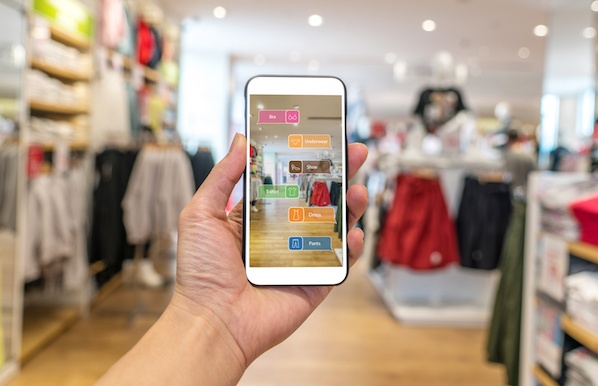As digitally native shoppers start to dominate the marketplace, retailers are increasingly turning to emerging technologies like augmented reality (AR) to deepen the connections between consumers and brands. This shift is not just a passing trend; it’s a response to the evolving demands of tech-savvy consumers.
The Growing Interest in Augmented Reality
Consider these compelling statistics:
- 66% of consumers are interested in using AR to assist with purchasing decisions.
- By 2025, nearly 75% of the global population and almost all smartphone users will be frequent AR users.
- A Nielsen global survey from 2019 highlighted AR and virtual reality (VR) as the top technologies consumers seek for daily life assistance.
Despite some viewing augmented reality as a novelty, the technology has already proven its value, particularly in the retail sector.
What is Augmented Reality?
Augmented reality is a technology that enhances the real world by overlaying digital content on real-life objects. When a user points their camera-equipped device at an object, AR software uses depth tracking and computer vision to recognize the object and overlay digital content on top of it. This creates an immersive and interactive experience as users shift their camera, and the AR display moves with it.
While AR has been around for years (think Snapchat’s dog filter and Pokémon GO), it’s now becoming a powerful tool for both brick-and-mortar businesses and direct-to-consumer brands.
The Benefits of Augmented Reality in Retail
1. Customer Engagement and Experiential Retail
Retailers are increasingly focusing on creating in-person experiences that drive engagement and curiosity among shoppers. Augmented reality plays a significant role in this by offering immersive shopping experiences. For example, Starbucks’ in-store AR experience allows customers to follow the journey of a coffee bean, providing an engaging and educational experience.
2. Sales and Conversion Lifts
AR can significantly boost both in-store and online conversion rates. According to Shopify data, merchants who add 3D content to their stores see a 94% conversion lift on average. Whether through virtual try-on experiences or virtual navigation, AR can make a meaningful difference in sales.
3. Contactless Experiences
The pandemic accelerated the shift toward contactless shopping. AR allows consumers to virtually evaluate products, saving time and effort while reducing the need for physical interaction. This has become increasingly important as ecommerce evolves and consumers seek more efficient ways to shop.
4. Sharable and Trackable Content
AR-powered filters and displays are not only fun to interact with, but they also serve as powerful marketing tools. For example, Ulta Beauty’s shoppable AR filters on Snapchat allow users to try on virtual makeup looks, share them on social media, and purchase the products directly in-app. This approach helps brands generate awareness, educate customers, and gain valuable insights.
Use Cases of Augmented Reality in Retail
1. Virtual Shopping
Augmented reality enables virtual shopping experiences where consumers can try on digital clothing and accessories in real-time. Retailers like Ray-Ban, Nike, and Amazon have successfully implemented AR-powered try-on experiences, allowing customers to see how products will look on them before purchasing.
2. Virtual Navigation
AR navigation systems guide shoppers through physical retail environments, providing additional product information directly on their smartphones. This helps shoppers easily navigate large stores and malls to find the items they want.
3. In-Store Displays
Augmented reality displays in stores can engage shoppers and drive brand awareness. These dynamic displays track real-time data and can be updated to optimize their effectiveness. PacSun’s AR campaign in New York featured a captivating window display that drew shoppers into the store and highlighted the brand’s latest collection.
4. Virtual Fitting Rooms
Virtual fitting rooms allow shoppers to try on items without physically touching them. This technology is becoming increasingly popular among retailers like Ralph Lauren, Adidas, and Macy’s. It provides customers with more options while helping retailers increase conversion rates and reduce returns.
The Future of Augmented Reality in Retail
Over the next five years, augmented reality is expected to become a retail essential. As more shoppers experience the true power of AR, more retailers will look to incorporate it into their strategies. However, it’s important to ensure that AR experiences provide real value to customers and are not just used for entertainment.
As Ara Parikh, Product Marketing Manager at OmniVert, advises, “Make sure that the AR experience is not solely entertainment-driven but has some form of utility and is providing real value.”
